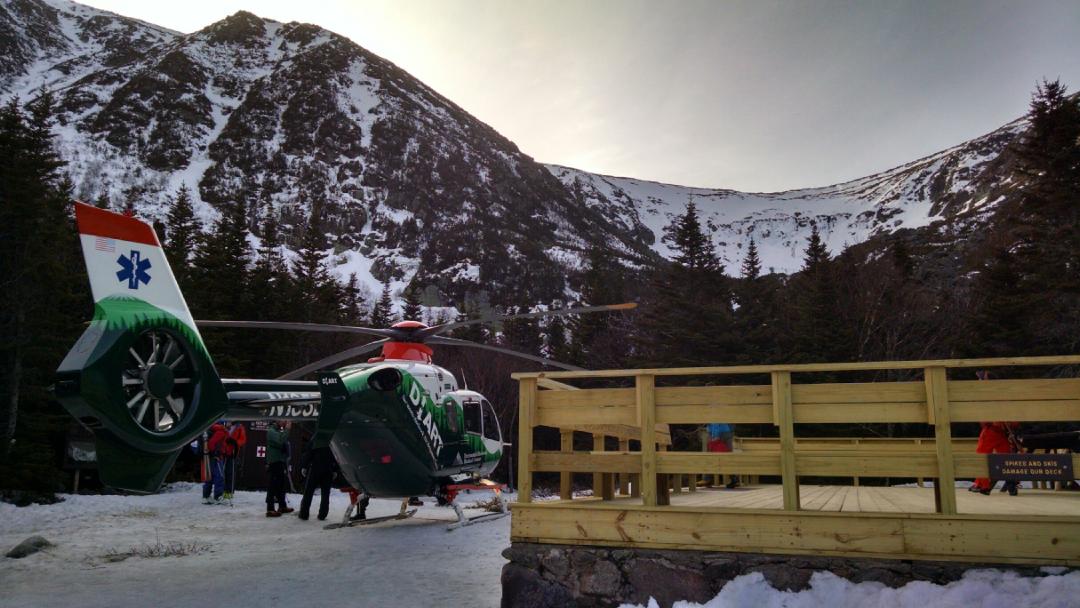| NEWS RELEASEUSDA Forest Service
White Mountain National Forest For Immediate Release Contact: Tiffany Benna tbenna@fs.fed.us or 603.348.0078 |
Icy Conditions in Tuckerman Ravine Lead to Two Evacuations
On Sunday, March 14, 2016, weather on Mount Washington was in the high 20’s (F) with bright sunshine and moderate northwest winds. Rain the previous week had saturated the snowpack which later refroze during the night when temperatures dropped to the mid-teens. By late morning, sun began to soften the snow, making for good skiing and snow climbing conditions in areas facing the sun. Unusually warm and dry conditions have predominated this winter, leaving many boulders and ice cliffs exposed which are usually buried by many feet of snow and avalanche debris at this time of year.
At approximately 3:00 p.m., a party of six skiers descended a 2,000-foot long 30-40 degree snow gully named Hillman’s Highway in Tuckerman Ravine. One of the six expert skiers slipped and fell part of the way down. Due to the icy nature of the slope, he was unable to arrest his fall which took him 700 -900’ down the slope over patches of ice, boulders, and at least one low angle ice and rock buttress. U.S. Forest Service Avalanche Center staff, Mount Washington Volunteer Ski Patrollers, an AMC Caretaker and several guides working in the area responded to render first aid and evacuate the patient. The crew performed a series of roped litter lowers to bring the man the remaining distance down the steep slope. Due the nature of the man’s injuries and calm weather conditions, a DHART helicopter was used to medivac the patient.

It is a rare day on Mount Washington when a helicopter can safely land for a rescue. -photo courtesy of Sam Bendroth
At approximately 5:30 p.m., Gorham Police Dispatch called U.S. Forest Service Snow Rangers to report a request for help for an injured climber near the summit of Washington on the Tuckerman Ravine trail. A rescue team was again dispatched to locate the party. Simultaneously, a team of NH Fish and Game officers, Mountain Rescue Service members, and NH State Park personnel used the Mount Washington Auto Road to approach the east snowfields in attempt to locate and evacuate the patient before dark. Given the nature of the injuries and time of day, DHART was once again to fly out the patient. The patient was located at about 6:45 p.m. Due to flight regulations, the first DHART flight crew returned to base before the small rescue team could move the patient through difficult terrain to the landing zone. A fresh DHART crew arrived at the landing zone and the patient was transferred to Dartmouth-Hitchcock Hospital just before 10:00 p.m.
It is critical for people climbing and skiing on Mount Washington to understand the variability of surface conditions, particularly this time of year. This winter has brought several heavy rain events which have melted and saturated the meager snowpack. Due to this melting and refreezing action, many late spring hazards have already emerged, including undermined snow, deep holes in the snow from waterfalls, and as was the case on Sunday, an icy snowpack capable of creating long, sliding falls. These hazards add complexity to the already severe weather and associated avalanche dangers, which threaten the Ravines every winter.